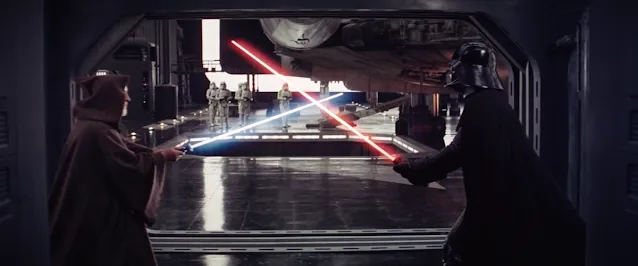One of the most memorable moments in the series is the climactic lightsaber battle between Darth Vader and Obi-Wan Kenobi in the original film, A New Hope. However, some viewers have questioned why the fight seems so slow and uneventful, particularly in comparison to the more dynamic and fast-paced battles seen in later Star Wars films.
The reason for this slower fight scene can be attributed to a combination of factors, both in terms of the production and the plot.
The reason for this slower fight scene can be attributed to a combination of factors, both in terms of the production and the plot.
From a production standpoint, the filmmaking techniques of the 1970s, when A New Hope was made, were different from those used today. Action scenes were often filmed with longer takes and fewer cuts, which could make the action appear slower and less dynamic. Additionally, the choreography of fight scenes was not as complex as it is now, partly due to safety concerns and limitations of special effects technology.
However, the slower fight scene in A New Hope was also a deliberate choice on the part of the filmmakers for storytelling purposes.
The fight between Darth Vader and Obi-Wan was not necessarily meant to be a fast-paced action sequence, but rather a symbolic confrontation between two powerful Jedi with a complicated history.
Obi-Wan's decision to sacrifice himself in the fight was a way to distract Vader and allow Luke and the others to escape, and it was also a way for Obi-Wan to transcend his physical form and become one with the Force.
Thus, the focus of the scene was not on flashy swordplay, but on the emotional stakes and character development.
 |
| Then you are lost! |
In contrast to the slower, more symbolic fight scene in A New Hope, the battle between Kenobi and Anakin is a fast-paced, acrobatic duel that spans various 'lava fluid' locations on the volcanic planet of Mustafar.
The choreography of the fight scene is much more complex and dynamic than in A New Hope, with the two Jedi using their lightsabers in a variety of ways, such as throwing them like boomerangs, spinning them around their bodies, and using the Force to launch themselves into the air. The scene is also visually striking, with the red and orange hues of the volcanic landscape contrasting with the blue lightsabers.
However, the fight between Kenobi and Anakin in Revenge of the Sith also serves a different purpose than the fight between Darth Vader and Obi-Wan in A New Hope. While the latter is focused on character development and symbolism, the former is a crucial plot point that sets the stage for the rest of the film and the original trilogy. The fight is the climax of Anakin's fall to the dark side and his transformation into Darth Vader, as well as the moment when Obi-Wan realizes that his former apprentice is truly lost.
The choreography of the fight scene is much more complex and dynamic than in A New Hope, with the two Jedi using their lightsabers in a variety of ways, such as throwing them like boomerangs, spinning them around their bodies, and using the Force to launch themselves into the air. The scene is also visually striking, with the red and orange hues of the volcanic landscape contrasting with the blue lightsabers.
However, the fight between Kenobi and Anakin in Revenge of the Sith also serves a different purpose than the fight between Darth Vader and Obi-Wan in A New Hope. While the latter is focused on character development and symbolism, the former is a crucial plot point that sets the stage for the rest of the film and the original trilogy. The fight is the climax of Anakin's fall to the dark side and his transformation into Darth Vader, as well as the moment when Obi-Wan realizes that his former apprentice is truly lost.
In conclusion, the slower fight scene between Darth Vader and Obi-Wan in A New Hope can be attributed to both production limitations and storytelling choices. While modern audiences may expect more visually stunning action scenes, the fight remains a memorable and impactful moment in the Star Wars franchise, and its significance goes beyond mere spectacle.
















0 comments:
Post a Comment